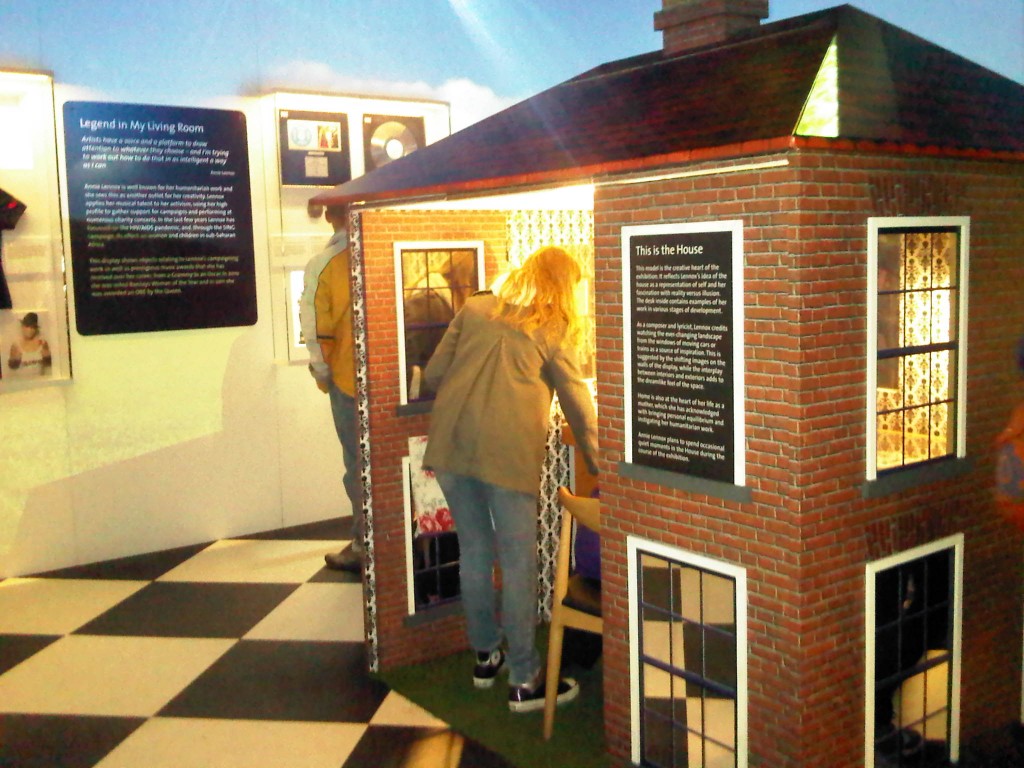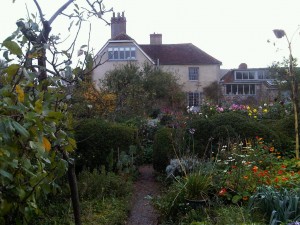Another busy week. A couple of days ago I finally found time to visit the recently renovated – or should I say reinvented? – ceramics galleries at the V&A. I adore the V&A. As a child it would inevitably be the Natural History Museum that formed the first priority of any trip up to town, but while I still love it dearly its ‘reformatting’ (away from the maze-like galleries of mysterious glass cases and towards a sparser, more interactive ethos) and the rumbustious presence of billions of excited small children (ha ha) on their interminable quest for dinosaurs now makes me tend to veer towards the V&A.
It’s a treasure house for the imagination. It overwhelms me with the possibilities for story it contains, and a meander through its galleries can bring tears to my eyes at the pleasure of it. That was especially the case on this last visit, when I discovered that at the heart of the light-strewn labyrinth that now forms the ceramics section (on the top floor, which brings to the galleries a rapturous sense of privacy and quiet) the curators had seen fit to reconstruct a corner of Lucie Rie’s Albion Mews studio, complete with Lucie’s own furniture and equipment as well as a generous selection of her ceramics.
I have long loved Rie’s work, which in its deceptive simplicity is so emblematic of the quiet determination and steely courage she showed in reconstructing her own life after her flight and exile from the cultured heart of Europe, where she rightfully belonged. Seeing her things made me weep. The imagination and cultural insight that has been demonstrated in the refurbishment of the V&A’s ceramics galleries is something the museum’s architects and curators and the city of London itself can justly be proud of.
On my way downstairs I stumbled across another reconstruction of a private space, albeit of a metaphorical rather than replicative nature. The temporary installation entitled ‘The House of Annie Lennox,’ containing as its centrepiece a wendy-house-like simulacrum of a lighted study and created under close collaboration with the performer and songwriter herself, is an unusual and rather beautiful conceit and I found it delightful. Unlike so much conceptual art – which while it might be intellectually stimulating is so emotionally barren it undermines, for me at least, its own purpose – ‘The House of Annie Lennox’ made me smile, and without a trace of irony in the gesture. I loved seeing Annie’s hand-written lyrics. I enjoyed opening the desk drawers to see what was in them, looking at the iconic stills of the mercurial, metamorphic Lennox in her extravagant stage outfits, listening once again to the anthemic ‘Why’. It was satisfying also to see other people enjoying themselves in the same way that I was. A maze within a maze, if you like.
Yesterday brought an end-of-season visit to Charleston, the sixteenth-century farmhouse that was the home of Duncan Grant and Vanessa Bell and the ‘country headquarters’ of Bloomsbury for more than fifty years. It’s twenty-five years since I was last there and the sense of pathos and ‘temps perdu’ I found caught me off guard. The place – in spite of the telling and retelling of the same tired anecdotes, the reproduction souvenir pottery, the fusty unfashionableness of the whole Bloomsbury experiment – still resonates, and with more than just nostalgia. A portrait of the young Vanessa asleep by Roger Fry, and Duncan Grant’s later portrait, ‘Vanessa Bell Painting at La Souco’, were especially moving. Vanessa’s own portrait of her sister Virginia Woolf, shown seated in an armchair at her home in Tavistock Square, was an inspiring sight.
The view towards the house from the walled garden, the faint scents of the last roses hanging in the damp dusk as autumn crept up to envelop the whole of Sussex, was most moving of all.
I’m currently reading Anne Carson’s Autobiography of Red. I discovered this book via a recommendation by Ruth Padel in The Guardian, and I am just jealous, jealous, jealous! The wit, intelligence and beauty in this ‘novel in verse’ is, as Padel suggests, mind blowing. In its seamless fusion of influence and inspiration, its knowing overthrow of old forms even as it pays homage to them, the book it brings most swiftly to mind for me is Lawrence Norfolk’s superlative In the Shape of a Boar. Perhaps the fact that I can even find myself comparing a dense, 300-page novel with a perfectly spare, perfectly fashioned volume of half its length, a guerilla attack on the notion of classical poetic convention, gives some measure of how original and how brilliant both books are.
The Greek myths, the way they come down to us inseparably linked with the great lyric and philosophic literature of their day, have excited and inspired me from the age of nine. In January of this year I began writing a pair of novellas that draw on Ovid’s Metamorphoses. Due to the various upheavals this year has presented and the necessity of completing other projects first, these stories are currently languishing in first draft. They nag at me constantly though, demanding attention. Anne Carson has made me both fearful and furiously excited at the prospect of getting back to them.
Intelligent, thought-provoking and much appreciated comment on The Silver Wind from Niall Harrison and Sofia Samatar at Strange Horizons here and here. Working on something new, a story that is helping me to think about the novel I’m planning.

